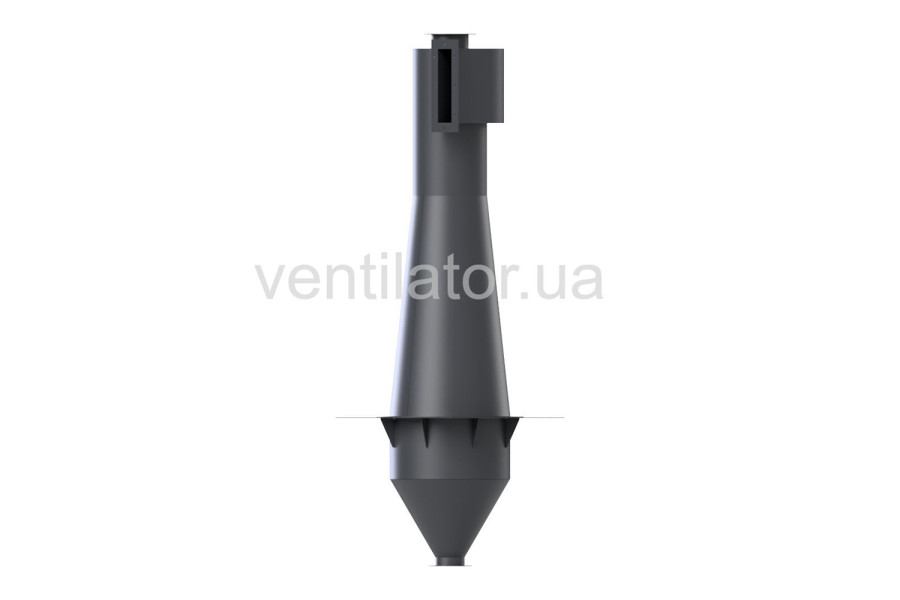




- C – cyclone;
- OK – with reverse cone;
- 10 – cyclone size type;
- with bunker;






General Information COK-10 with bunker
The application area of devices such as a cyclone is ventilation and purification of contaminated air. The reverse-body cyclone COK is designed specifically to remove dry, non-sticky dust from the air. This unit is also highly effective in working with dust that contains a high percentage of abrasive materials. Operation with sticky dust is also possible, but only in cases where the dust contains talc or soot. For other types of sticky dust, using COK-type cyclones is not recommended.
Air Purification Using COK-10 with bunker
The primary application area is metalworking. These units are effectively used for cleaning gas-air mixtures in foundries, thermal shops, and mechanical metal processing workshops, as well as in other industrial facilities handling similar materials. COK cyclones are considered the best choice when it comes to handling abrasive dust. These units lack a conical part, which is typically prone to rapid wear when exposed to abrasives. This design enables high-efficiency operation without risking premature damage. If the proportion of abrasive particles in the gas is too high, the unit can be manufactured from thicker metal (up to 3 mm) to withstand even the most extreme conditions.
Air Cleaning Process in COK-10 with bunker
The purification process in COK-type cyclones occurs as follows:
Maximum permissible dust concentration — up to 1000 g/m3. Permissible gas temperature — up to 150°C. Purification efficiency — up to 80%.
Installation of COK-10 with bunker
The fan (induced-draft machine) can be installed on either the pressure side or the suction side of the aspiration duct. However, it is recommended to install the fan on the suction side in combination with a snail casing. This configuration provides better performance. When selecting a fan, it’s crucial to consider aerodynamic resistance and pressure drops at maximum air flow. To increase efficiency, the cyclone should be equipped with an air swirl generator made from low-alloy steel.
The COK cyclone also includes a built-in internal cone, which acts as a barrier preventing re-entrainment of settled dust from the hopper. This design element is what gave this unit its name — "COK cyclone with internal cone." The installation angle of the cone depends on the processed material: 45° for dry dust, 60° for soot or talc.
For maximum efficiency of the entire aspiration system, it is important to coordinate the following elements:
Design Features of COK-10 with bunker
Standard material — carbon steel, resistant to corrosion. The units can be made with either right- or left-hand airflow rotation (specified when ordering). Available in single or multi-unit (grouped) configurations with up to 10 cyclones per group.
The hopper’s material, thickness, dimensions, shape, and cost depend on specific operating conditions and customer preferences. Options include removable drawers and custom adapters for connecting ducts and cyclone inlets of different sizes.
Before shipment, each cyclone is carefully primed and wrapped in protective film.
To perform a preliminary calculation, refer to the technical specification table below.
There are no reviews for this product.
There are no reviews for this product, be the first to leave your review.